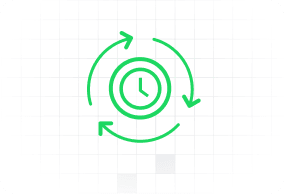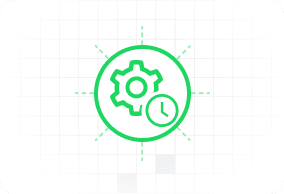Measure and track the most accurate
DORA METRICS
Oobeya offers a unique way to calculate DORA Metrics across coding repositories, CI/CD pipelines, and APM/Incident Management tools. Track the journey of a code change from development to deployment effortlessly.

No changes to workflows or
pipelines are required.
pipelines are required.
Why Oobeya Deployment Analytics?
To improve software delivery performance, you can start working with scientifically proven DevOps Research & Assessment (DORA) metrics.

Seamless Integration
To improve software delivery performance, you can start working with scientifically proven DevOps Research & Assessment (DORA) metrics.

Quick Start
Get started with Oobeya quickly. Initiate analytics and see your first DORA Metrics results in just 5 minutes.

Measure Across Tools
Connect your Version Control System, CI/CD, APM, Incident Management, and Issue Tracking tools to Oobeya for precise DORA metrics calculation.

Accurate Results
Calculating DORA metrics can be complex, but Oobeya Deployment Analytics makes it effortless. Harness Oobeya's advanced features for precise and reliable DORA metrics.
Track Your DORA Metrics
in Just 10 Minutes
Start your free trial now and see actionable results in minutes with Oobeya's Trial Edition.
What are DORA Metrics basically?
Imagine deploying new features rapidly while maintaining high reliability. This isn’t just a dream for software development teams—it’s achievable with the right metrics. DORA metrics are designed to help teams measure their performance and make data-driven improvements. If you’re an engineering leader aiming to boost your team’s efficiency and quality, this guide to DORA metrics will provide the insights you need.

Lead Time For Changes
The amount of time it takes a commit to get into production.

Deployment Frequency
How often an organization successfully releases to production.

Change Failure Rate
The percentage of deployments causing a failure in production.

Mean Time To Restore Service
How long it takes an organization to recover from a failure in production.
Oobeya, Inc. @ 2025
version: v1.0.2200

